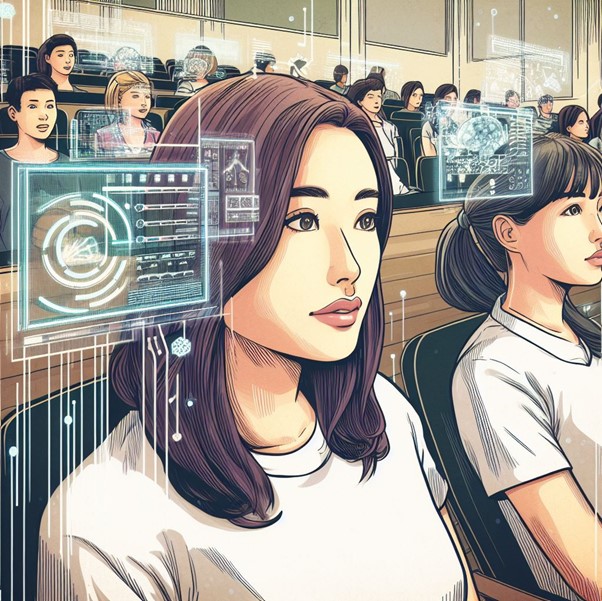By Liz Alvey
Last semester, excited about having a new tool to play with, I introduced ChatGPT into my genetics lectures, laboratories and tutorials whenever inspiration hit me. Upon reflection, it did not always go well. Now we begin another academic year, I have plans to make a couple of tweaks and bring Google Bard along to the classrooms with me. GenAI has huge potential to support students in their learning, as long as they are trained to use it wisely. If you are planning on dabbling with GenAI in your teaching this year, read on to make sure you avoid some of the mistakes that I made.
- Tip 1: Establish a transparent AI policy
You should share this policy with your students at the beginning of the session, and make it clear what is permitted. If the students feel like they know what is expected of them, they feel more comfortable and are more likely to engage with the session. There are some great policies that you can borrow (thanks, Ethan Mollick).
- Tip 2: Cater to Diverse Learners’ Prior Experience
Some of your students could be prompt engineering wizards, and are likely to know a lot more than you. However, up to about a third of the students in the biosciences say that they have never heard of GenAI, or have never used it. When planning your activities, ensure that you start from the beginning, so that all your students can join in. I show students where to find Google Bard under My Services, and then provide some light-hearted prompts for students to experiment with.
Example prompt: ‘Knowing that I love [studio Ghibli], suggest names for my new [robot hoover]’
- Tip 3: Expect Initial Exploration
For anyone who is using AI for the first time, their initial prompts may not work as hoped. It can then be very tempting to conclude that the AI is incapable of the task and give up. To overcome this, I suggest you provide students with customisable prompts. In my case, I am teaching enterprise and sustainability to Level 2 bioscience students and give them this prompt to get them started with their brainstorming.
Example prompt: Act as a [CEO of a university spin-out biotech company specialising in enzymes]. How could you contribute to tackling the UN SDGs? List [10 ideas].
Thinking about the future of our graduates, I invited all final-year students to a prompt engineering workshop designed to help them prepare for job interviews. My timing couldn’t have been worse. In May, the graduating students were overwhelmed with deadlines and exam anxiety, and not a single student showed up to my session! Surprisingly, two (uninvited) lecturers did show up; and we had an enjoyable hour role playing with ChatGPT. This semester I will introduce GenAI only when students need it.
- Tip 5: Choose Suitable Topics
Many writers find ChatGPT a helpful tool to overcome the paralysis of a blank page. To help them get started with their essays, I asked my first year tutees to generate five essay plans using ChatGPT; and then critically evaluate them. This activity failed to inspire much conversation between the students and I now realise that they did not have sufficient background knowledge of the essay subject to critically evaluate suggested plans. In fact, they struggled to have any opinion at all. If the aim of the session is to train students to apply their critical thinking skills to AI-generated text, ensure that you choose a topic that the students are comfortably familiar with (e.g. the synopsis of their favourite film).
- Tip 6: Emphasise Fact Checking
Sometimes the outputs from GenAI can be incorrect. I illustrate this by asking Bard to tell me what colour bin will be collected from my street today (it lies! It lies convincingly!). Take care to emphasise that the student is responsible for the accuracy of the work they produce, so they must embrace their inner diligent fact checker when using GenAI in University… and in life. I must embrace my inner fact checker as I finish this blog and put out my bin…

Resources:
Liz is a Senior Lecturer in the School of Biosciences and a plant scientist. She is passionate about creating an outward-facing curriculum that connects students with the real world. She also enjoys developing innovative teaching approaches that challenge students to apply their skills in new ways.


